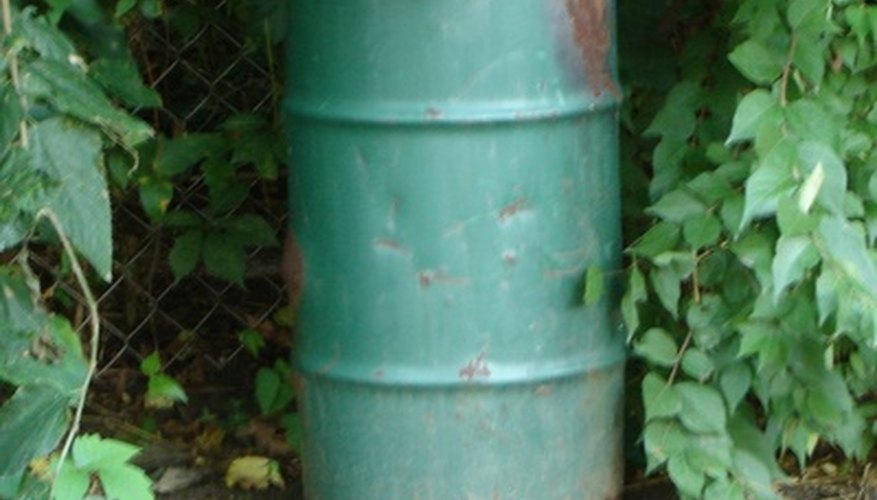A homemade back garden incinerator is a good idea for most rural or country homes, farms or estates. In campsites, a good incinerator is essential to cut down on visits by wild animals coming over for a late night snack drawn by the smell of rubbish. Due to the fact that rubbish isn't easy to burn, a homemade incinerator engineered to burn almost anything can be worth building.
Open burning bylaws
First, check to make sure that open burning is within the law in your area. Some cities and counties have bylaws that prohibit open burning. Once you have done that, you need to obtain a 250 litre (55 gallon) steel drum, a 60 cm (2 foot) section of 15 cm (6 inch) stove pipe and a 90 cm by 90 cm (3 foot by 3 foot) section of chicken wire.
Obtaining the raw material
You can get a 250 litre (55 gallon) drum at most scrap yards. Get the kind with the lid that is held on by a large bolted clamp. If they don't have one, call around to large food processing companies that buy large quantities of cooking oil, soda bottling companies, feed stores, or even newspapers that buy lots of ink because its mostly based on soybean oil. You can even use drums that have contained water based paint. Just stay away from drums that have contained solvents, gas, or anything flammable. You can get your stove pipe and chicken wire at any farm supply centre.
- You can get a 250 litre (55 gallon) drum at most scrap yards.
Fabricating the Incinerator
Take the top off the barrel by unbolting and removing the large retainer ring. For safety reasons, fill your drum with water then put the lid back on. Stand your section of stove pipe up on the lid and draw around it with a marker. Now take a hand grinder and cut out the circle. Don't worry if its not perfect. When that's done, force the crinkled end of your stove pipe into the hole so it sticks straight up.
- Take the top off the barrel by unbolting and removing the large retainer ring.
- When that's done, force the crinkled end of your stove pipe into the hole so it sticks straight up.
Fine tuning and completion
Incinerators need to generate a tremendous amount of heat to burn garbage because it can be wet. For these reasons, a passive airflow system must be created by punching some holes in the drum. Take off the lid and lay the drum down. Now take a large splitting maul or axe, and using the sharpest corner swing down as near to the bottom as possible. Punch angular slots pointing up all the way around the bottom of the drum. Stand up the barrel. Wad up the chicken wire and stuff it into the barrel using the maul to compress it to within 30 cm (12 inches) of the bottom. Stand the drum up, put in your garbage, light it, and put on the lid.
- Incinerators need to generate a tremendous amount of heat to burn garbage because it can be wet.
- Wad up the chicken wire and stuff it into the barrel using the maul to compress it to within 30 cm (12 inches) of the bottom.
